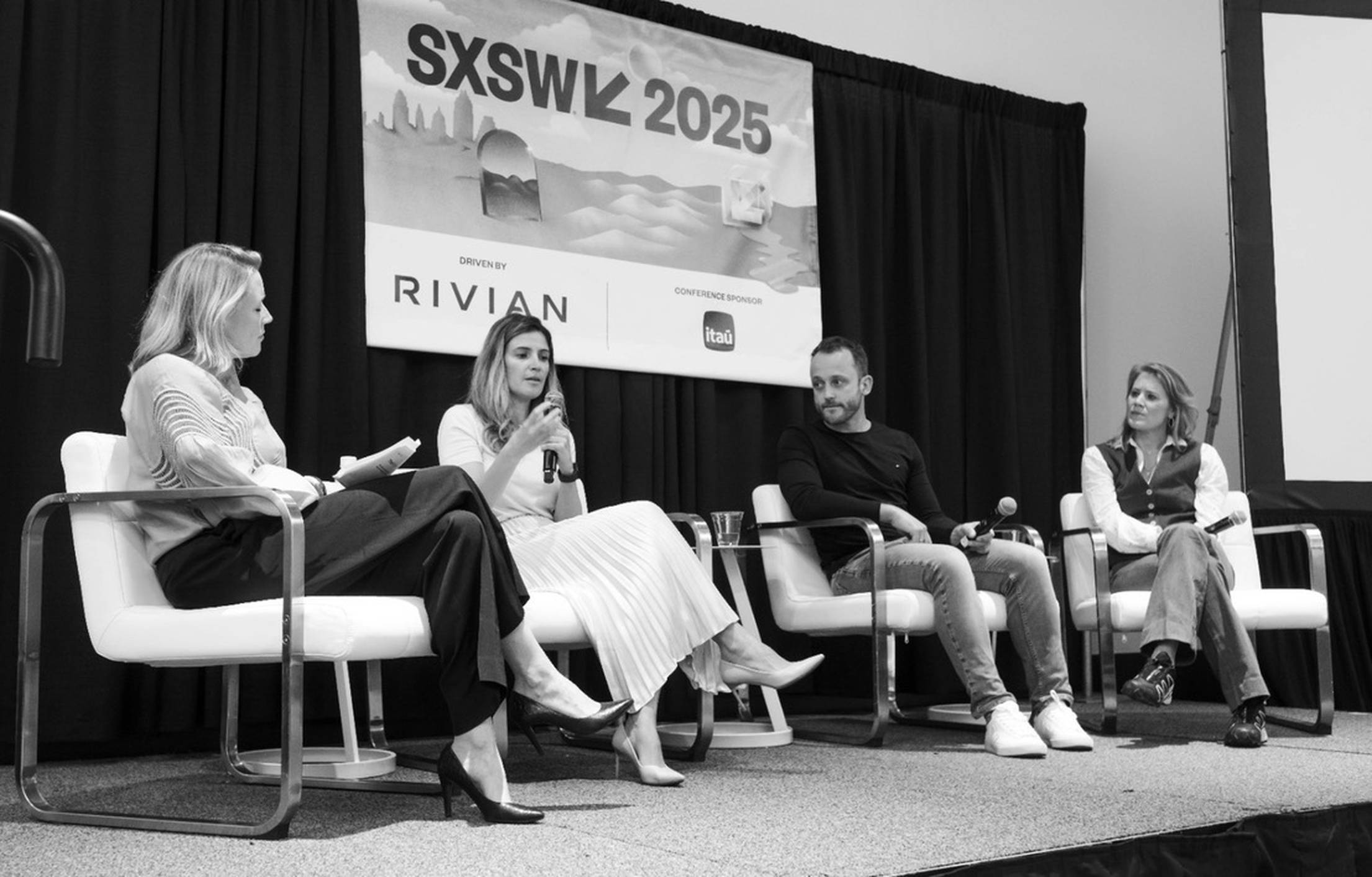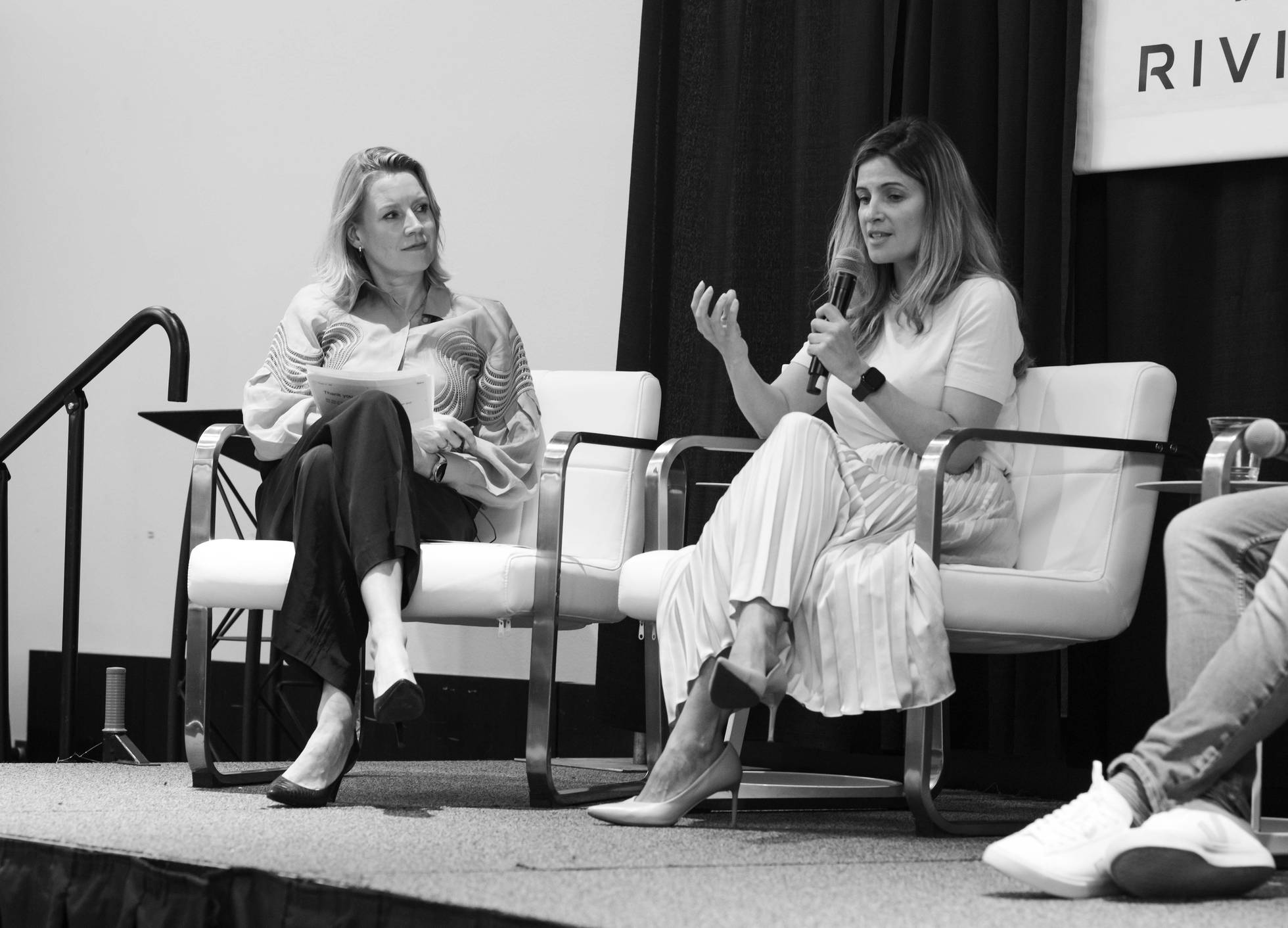What’s next for museums? How to embrace AI and human engagement
What will be next for museums and how can digital technology enhance visitor engagement and even the sector as a whole? This seemed like a good topic for a panel in the program of SXSW 2025. And I was thrilled that three specialists accepted the invitation to join me on the stage.

From digitized collections and interactive websites to immersive apps and virtual tours, museums are experimenting with various platforms to engage with their visitors. It almost seems normal now that museums offer the same tools and technology as commercial organizations. However, it has been quite a journey over the past decade to learn and understand how digital technology can serve their goals and purposes.
I was joined on stage by Patricia Buffa, former Director for Digital Strategy at the Fine Arts Museums of San Francisco and now Principal Product Marketing and Gen AI at Adobe in San Francisco, Leonard Punt, AI Lead and Partner at Q42 and Eidra, and Nanet Beumer, Head of Digital, Marketing & Campaigns at the Rijksmuseum in Amsterdam. Curious to hear our full conversation? You can find the complete audio recording on the official SXSW festival page.
Museums have evolved from spaces of contemplation to hubs of connection and community, with digital tools playing a key role in the shift. The innovations don’t change the art itself but deepen the engagement. Art stands on its own; technology simply opens new doors to its impact.

What is visitor engagement?
Museums have visitors in their building and online. This means the outreach of museums with digital tools and social media can be huge and it is a big opportunity for museums, as for any brand, to have a full circle engagement. Museum visitors and art lovers become fans. Museums even use influencers on social media in their marketing campaigns. The fans follow updates on exhibitions, art and activities. They are in the loop of what’s going on in and around their favourite museums.
Museums have established increased meaning and relevance for those followers, and they now grow awareness of how museums participate in society and culture right now. Here lies a big opportunity for museums, from the education department to the curators: evolving the museum from a place to visit and contemplate to a place to interact and be part of a community.
Social platforms and digital technology are vital for leveraging what museums have to offer to a wider audience and this helps to increase personal connection and engagement. However, the competition on those platforms for the attention of the visitors is fierce.
The top performing museums are:
- Musee du Louvre
Visitors in the museum 8 milion, Instragram followers 8,8 million. - MOMA
Visitors in the museum 3 million, Instagram followers 5,9 million. - The Metropolitan
Visitors in the museum 5,6 million, Instagram followers 4,4 million. - Rijksmuseum
Visitors in the museum 3-3,5 million, Instagram followers 1 million.
Fun fact: The Rijksmuseum set a record for visitor engagement on their website the 'Closer to Vermeer' online exhibition platform. It drew 690.000 visitors from February untill May 2023, reaching 16,5 million page views and an average of 12 minutes per visit. The experience was rated with an 8.8 on a scale of 1-10.

Should museums go all in with AI? The answer is YES if you have good data sets to rely upon. And make sure you have budget for research and prototyping, so you can build a better use case for GenAI and raise the funds to bring your project to fruition.
Go all in with AI?
For museums, AI can only be an option if they have data. It sounds straightforward, but for many museums, digitizing and cataloging their collections is still an ongoing process. Creating, improving, and growing the collection database, enhancing the metadata, and preparing it for visitor use is at the core of establishing a digital foundation. Larger museums, as frontrunners, are investing in and experimenting with AI. All museums should pay attention to and be inspired by the activities and experiments of these frontrunners.
The panel also discussed that digital technology is not just about having a website. It's about creating a digital ecosystem where the collection database, digital and interactive installations in the museum, a CRM for digital marketing, ticket sales, and possibly a webshop are all integrated. Many museums need to grow in digital maturity. The answer to the question 'Should museums go all in with digital technology?' is YES! When to start using AI depends on priorities. Museums face yearly budget challenges, and investing in a digital ecosystem means asking sponsors to fund not only the frontend but also the backend and infrastructure of digital technology. To do this right, creating a digital roadmap and pinpointing priorities should become a fundamental habit for museums.
Using GenAI can play an important role in increasing visitor engagement. By using machine learning algorithms, museums will be able to create personalized visitor experiences and interactive exhibits that respond to visitor behaviour in real-time. This not only enhances the visitor experience but also provides valuable data for future exhibit planning. In December 2024 Rijksmuseum in Amsterdam has launched the Art Explorer, the improved and AI driven collection search. Thanks to GenAI the Rijksmuseum is now able to connect more data than ever before, giving visitors better results and more serendipity from the collection database.

"GenAI offers transformative tools that enhance museum experiences by helping people discover art in new and engaging ways. GenAI can enrich museum collections by providing translations and summaries, generating synthetic data that makes the collection more accessible to a broader audience. This data isn't limited to text; it can also include speech, enabling the creation of audio tours. And perhaps the most exciting aspect is that GenAI provides us with tools to create new types of interfaces. In collaboration with the Rijksmuseum, we developed a tool called the Art Explorer, which uses these models to match objects with emotions, offering a completely new way to explore a collection." Leonard Punt, AI Lead and Partner at Q42 and Eidra.
What’s next for museums?
Museums can go for full circle engagement, offline and online. This should not result in mainstream marketing campaigns to draw the audience’s attention. Like in any sector, museums need to stay relevant and attractive for changing demographics and cultures. But they will have to remain a source of truth for cultural guidance and exploration, art and science. Museums can engage with their audience in a more popular way, without losing the gift of showing perspectives and stimulate critical thinking. Technology can help people to make a personal connection.
Museums should continue to build a community using relevant content and digital tools that enhances engagement. After all, museums have the solid position of coherently showing the real thing with their collections, amidst so much scattered content.
After thought
While there is naturally a lot of talk about 'what's next' during the SXSW conference, I found it striking this year that many speakers discussed 'real use cases' and emphasized that technology is always about people. For museums this is clearly the case: become an even more engaging, trusted and free space for people to connect.
Interested in more?
If you ‘d like to read more, test and experience the newest projects:
- Test the AI driven collection search called “Art Explorer” of the Rijksmuseum yourself.
- Follow the restoration of Rembrandt’s Night watch, Rijksmuseum’s current big digital project.
- Closer to Vermeer - It never gets boring, exploring art with high-res images. Check out the award-winning platform.
- Check out the Imaginarium, the new release of National Gallery London, and they were confident that they could use AI for bringing paintings to live bring visitors closer to the stories of the painting and the makers.
- Learn how the Fine Arts Museum San Francisco worked with Augmented reality to make an iconic fashion collection wearable for its visitors link.
Nice to read:
- Musée du Louvre, Mona Lisa in VR in your own home.
- Centre Pompinou, A Conversational AI Guide at Centre Pompidou.
- MoMa magazine, Deep Learning: AI, Art History, and the Museum.
- Museo Del Prado, Augmented Reading of the collection: annotated contents, more accessible and closer to the viewer.
Want to relive the moment or catch what you missed? Head over to the SXSW event page to listen to the full panel audio recording!
If you’d like to explore more of Fabrique’s museum projects or see how Eidra brings together our diverse expertise in global collaborations, just follow the links.